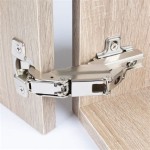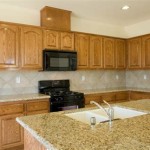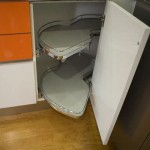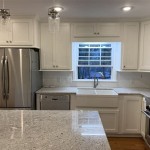Can You Wax Kitchen Cabinets? A Comprehensive Guide
Maintaining the aesthetic appeal and extending the lifespan of kitchen cabinets is a common concern for homeowners. A question frequently arises regarding the suitability of wax as a protective coating for these cabinets. This article will explore the potential benefits and drawbacks of waxing kitchen cabinets, the types of wax suitable for this application, the proper application techniques, and alternative protective measures to consider.
Understanding the Composition of Kitchen Cabinets
Before determining whether waxing is an appropriate treatment, it is crucial to understand the materials from which kitchen cabinets are typically constructed. Common materials include solid wood (such as oak, maple, or cherry), wood veneers over particleboard or MDF (medium-density fiberboard), laminate, and painted surfaces. Each of these materials reacts differently to various treatments, including waxing.
Solid wood cabinets possess a natural grain and porous structure, allowing them to absorb treatments more readily. Veneers, being thin layers of wood adhered to a substrate, offer a similar aesthetic to solid wood but are more susceptible to damage if the underlying adhesive is compromised. Laminate surfaces, typically made of plastic or melamine, are non-porous and highly resistant to moisture and stains. Painted surfaces can vary in composition, from oil-based to water-based paints, each with distinct properties regarding permeability and durability.
The existing finish on the cabinets is also a critical factor. Some cabinets are finished with varnish, lacquer, or polyurethane, which create a protective layer. Applying wax over these finishes can sometimes lead to compatibility issues or negate the benefits of the underlying finish. Therefore, assessing the existing cabinet material and finish is paramount before proceeding with any waxing treatment.
The Potential Benefits of Waxing Kitchen Cabinets
Waxing, primarily using paste wax or furniture wax, can offer several potential benefits to kitchen cabinets. These potential advantages include enhanced protection, improved aesthetics, and ease of maintenance.
One primary benefit is the protection against minor scratches and scuffs. Wax forms a thin, sacrificial layer on the surface of the cabinet. Any minor abrasions would affect the wax layer, rather than the underlying finish or material. This can help preserve the integrity of the cabinet surface and reduce the need for more extensive refinishing or repair.
Aesthetically, wax can enhance the appearance of wood cabinets by providing a subtle sheen and bringing out the natural grain patterns. It can also add depth and richness to the color of the wood. For painted cabinets, wax can provide a slight luster, making the surface appear smoother and more refined.
Furthermore, waxing can simplify cleaning and maintenance. The wax layer creates a smoother surface, making it easier to wipe away dust, fingerprints, and minor spills. This can reduce the effort required to keep the cabinets looking clean and presentable.
Potential Drawbacks and Considerations
While waxing kitchen cabinets presents potential benefits, there are also several drawbacks and considerations that need to be carefully evaluated. These drawbacks primarily pertain to the suitability of wax for cabinets subjected to moisture and grease, compatibility issues with existing finishes, and the required maintenance involved in applying and maintaining a wax coating.
A significant drawback is that wax is not particularly resistant to moisture or grease, which are common occurrences in a kitchen environment. Repeated exposure to water or cooking grease can break down the wax layer, diminishing its protective properties and potentially leading to a build-up of residue. This residue can attract dirt and dust, making the cabinets look dull and grimy. Therefore, waxing cabinets located near the stove or sink may not be the most effective solution.
Compatibility with existing finishes is another crucial consideration. Applying wax over certain finishes, such as polyurethane or lacquer, can create a hazy or cloudy appearance. This is because the wax can interfere with the smooth, even surface of these finishes. It is always recommended to test a small, inconspicuous area of the cabinet before applying wax to the entire surface.
Finally, waxing requires regular maintenance. Unlike more durable finishes like polyurethane, wax needs to be reapplied periodically to maintain its protective and aesthetic properties. The frequency of reapplication will depend on the level of use and exposure to moisture and grease, but it typically ranges from every few months to once a year. This ongoing maintenance can be time-consuming and may not be suitable for individuals seeking a low-maintenance solution.
Selecting the Right Type of Wax
If waxing is deemed a suitable option for kitchen cabinets, choosing the appropriate type of wax is essential. Various types of wax are available, each with distinct properties and intended applications. The most common types of wax used for furniture and cabinets include paste wax, beeswax, and carnauba wax.
Paste wax, typically made from a blend of waxes, solvents, and sometimes colorants, is a popular choice for furniture and cabinets. It is relatively easy to apply and buff, providing a durable and protective finish. Paste wax is available in both clear and tinted varieties, allowing users to enhance the color of the wood or add a subtle sheen.
Beeswax is a natural wax derived from honeybees. It is often used in its pure form or blended with other waxes and oils. Beeswax provides a softer, more natural-looking finish than paste wax. It is also known for its pleasant scent and non-toxic properties. However, beeswax is generally less durable than paste wax and may require more frequent reapplication.
Carnauba wax, derived from the leaves of the carnauba palm tree, is one of the hardest natural waxes available. It is often used in polishes and waxes to provide a durable and high-gloss finish. While carnauba wax can be used on furniture and cabinets, it is generally more difficult to apply and buff than paste wax or beeswax. It is often incorporated in wax blends to enhance durability and shine.
When selecting a wax for kitchen cabinets, it is essential to consider the type of wood or finish, the desired level of protection, and the ease of application. Always read the manufacturer's instructions carefully and test the wax on a small, inconspicuous area before applying it to the entire surface.
Proper Application Techniques for Waxing Kitchen Cabinets
Applying wax to kitchen cabinets requires careful preparation and attention to detail to achieve the desired results. Following the proper application techniques will help ensure an even, durable, and aesthetically pleasing finish.
The first step is to thoroughly clean the cabinets. Remove any dust, dirt, grease, or old wax buildup using a mild detergent and water solution. Dry the cabinets completely before proceeding. If the cabinets have an existing finish that is damaged or peeling, it may be necessary to sand or strip the finish before applying wax. Sanding should be done carefully and evenly, using fine-grit sandpaper to avoid damaging the wood.
Once the cabinets are clean and dry, apply a thin, even coat of wax using a clean cloth or brush. Work in small sections, following the grain of the wood. Avoid applying too much wax, as this can lead to a buildup of residue and a sticky, uneven finish.
After applying the wax, allow it to dry for the recommended time, typically 15-30 minutes. Once the wax is dry, buff the surface with a clean, soft cloth. Use small, circular motions to remove any excess wax and create a smooth, polished finish. Buffing is a crucial step in the waxing process, as it helps to distribute the wax evenly and create a protective layer.
For enhanced protection and durability, consider applying multiple thin coats of wax, allowing each coat to dry and buffing in between applications. This will create a thicker, more resilient wax layer that can withstand wear and tear. Regular maintenance, including dusting and occasional re-waxing, will help maintain the appearance and protection of the cabinets.
Alternative Protective Measures for Kitchen Cabinets
While waxing can be a viable option for protecting and enhancing the appearance of kitchen cabinets, several alternative protective measures can be considered. These alternatives offer varying degrees of durability, ease of maintenance, and resistance to moisture and grease. Some of these alternatives include polyurethane coatings, varnish, and cabinet refinishing.
Polyurethane is a durable, synthetic resin that provides excellent protection against moisture, scratches, and stains. It is available in both oil-based and water-based formulas. Polyurethane is typically applied in multiple coats, creating a hard, clear finish that is resistant to wear and tear. While polyurethane is more durable than wax, it is also more difficult to apply and may require specialized equipment and skills.
Varnish is another durable finish that provides good protection against moisture and scratches. It is typically made from a combination of resins, solvents, and drying oils. Varnish is available in various sheens, from matte to high gloss. Like polyurethane, varnish requires careful application and may involve multiple coats. However, varnish can offer a more traditional or antique look compared to polyurethane.
Cabinet refinishing involves stripping the existing finish and applying a new finish, such as paint, stain, or varnish. This is a more extensive process than simply waxing or applying a protective coating, but it can significantly improve the appearance and durability of the cabinets. Cabinet refinishing is often done by professionals and may involve removing the cabinets from the kitchen.
The selection of the most suitable protective measure depends on the specific needs and preferences of the homeowner. Factors to consider include the level of protection required, the desired aesthetic, the budget, and the homeowner's skill level. Consulting with a professional cabinet refinisher can provide valuable insights and recommendations based on the unique characteristics of the kitchen cabinets.

Liming Wax On Oak Cabinets

Adding Dimension To Kitchen Cabinets With Annie Sloan Soft Wax Diy Makeover Painting White

Liming Wax On Oak Cabinets

How To Update Oak Cabinets With Briwax

Refreshing Worn Wood With Briwax

Diy Lime Wax On Honey Oak Cabinets Home Remodeling

14 Stunning Kitchens With Wood Cabinets Postcards From The Ridge

Chalk Painted Kitchen Cabinets Two Years Later Our Storied Home

How Much Would You Charge To Paint Annie Sloan Wax Kitchen Cabinets Hometalk

The Ultimate Guide To Cabinet Care Doors N More
Related Posts








